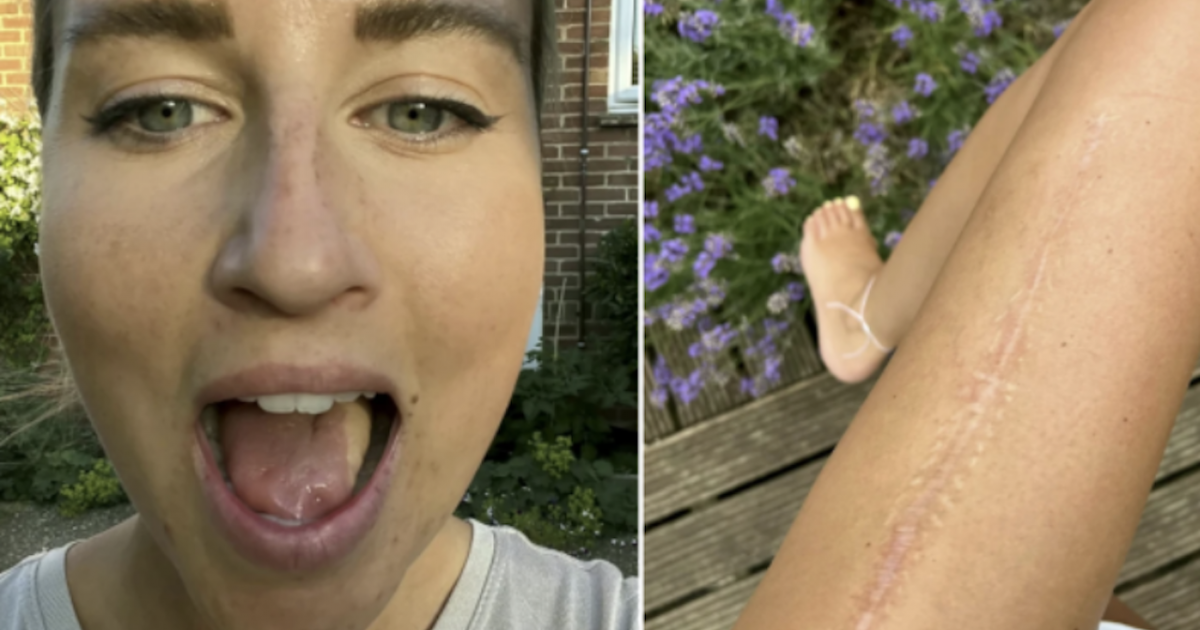Woman Battles Mouth Cancer With Positive Attitude
- A 27-year-old woman continued getting mouth ulcers which later led to a diagnosis of mouth cancer. Her mother also battled cancer.
- The woman had part of her tongue removed due to cancer, and it was replaced with tissue from her leg. With a positive attitude, she jokes about how it looks!
- Detecting mouth cancer as early as possible allows doctors to use the least invasive treatment procedures available. It also gives these treatments the best chance of being effective.
Webster-Salter jokes that her tongue now looks like a “drumstick lolly.” We love her positive and light-hearted attitude through her cancer battle it’s so important to stay positive and grateful through health challenges.
Webster-Salter’s Cancer Battle
Read MoreIt’s so important to see your doctor when something feels or looks off. You are your best healthcare advocate.
Webster-Salter had a biopsy which led to the diagnosis of cancerous. She had a cancerous tumor in her mouth. “I just laughed when they told me,” she says. “I was so shocked I didn't know how to react. Cancer was the furthest thing from my mind.”
She had a nine-hour surgery to “cut away the affected part of her tongue and replace it with muscle from her thigh called a 'skin flap',” reports The Mirror. Webster-Salter’s treatment was effective and her cancer did not spread. Today, she’s attending university and studying to become a midwife.
Nutrition Support for Esophageal Cancer Patients
Understanding Mouth Cancer
Mouth cancer (also called oral cavity cancer) is a type of head and neck cancer that can appear anywhere in the mouthon the lips, cheeks, tongue, tonsils or gums. Mouth cancer affects about 30,000 Americans every year.
In a previous interview with SurvivorNet, Dr. Allen Ho of Cedars Sinai explained the typical process of identifying and analyzing mouth cancer. Ho acknowledged that mouth cancers are often identified by dentists during exams before routine cleaning.
"Many dentists will find little cystic lesions, or benign growths in the tongue or around the mouth, or the gingiva. Oftentimes, they're benign, or nothing to be overly concerned about," he said. When these lesions and growths may be cancerous, though, Dr. Ho said that the workup typically involves confirming the diagnosis, testing to assess the specifics of the cancer, and conducting imaging (like an MRI, a CT, or a PET-CT) to determine whether the cancer has spread to other parts of the body.
For mouth cancers, biopsies can often be performed directly without surgery. Biopsies allow doctors to determine the stage of the mouth cancer and help patients weigh different treatment options. For early-stage mouth cancers, the typical treatment path is surgery alone. For stage three and stage four mouth cancer, radiation usually accompanies surgery. For advanced-stage mouth cancers that also have other qualities that make it more aggressive, doctors will typically add chemotherapy on top of radiation and surgery. Detecting mouth cancer as early as possible allows doctors to use the least invasive treatment procedures available. It also gives these treatments the best chance of being effective.
Contributing: SuvivorNet staff
Learn more about SurvivorNet's rigorous medical review process.

